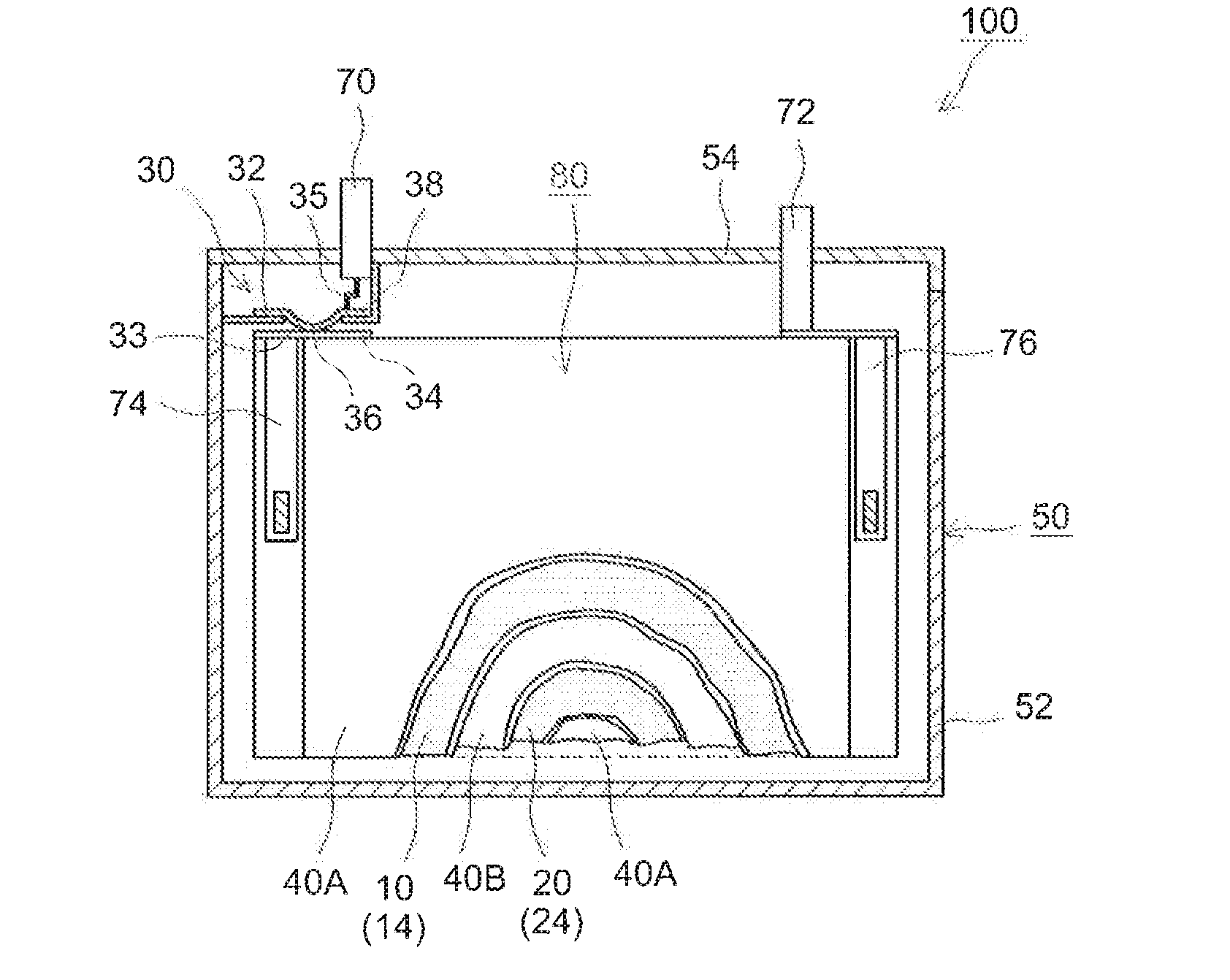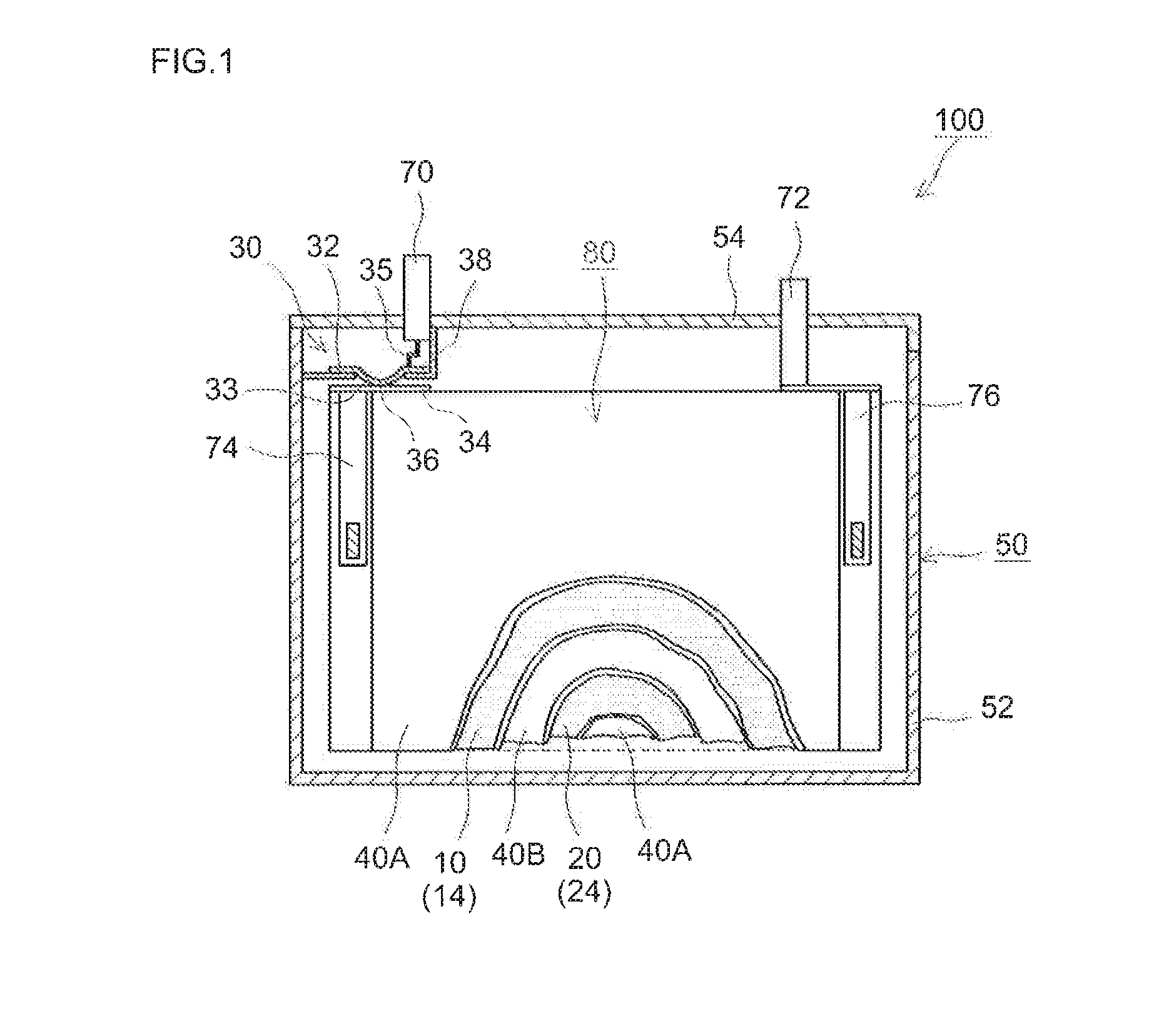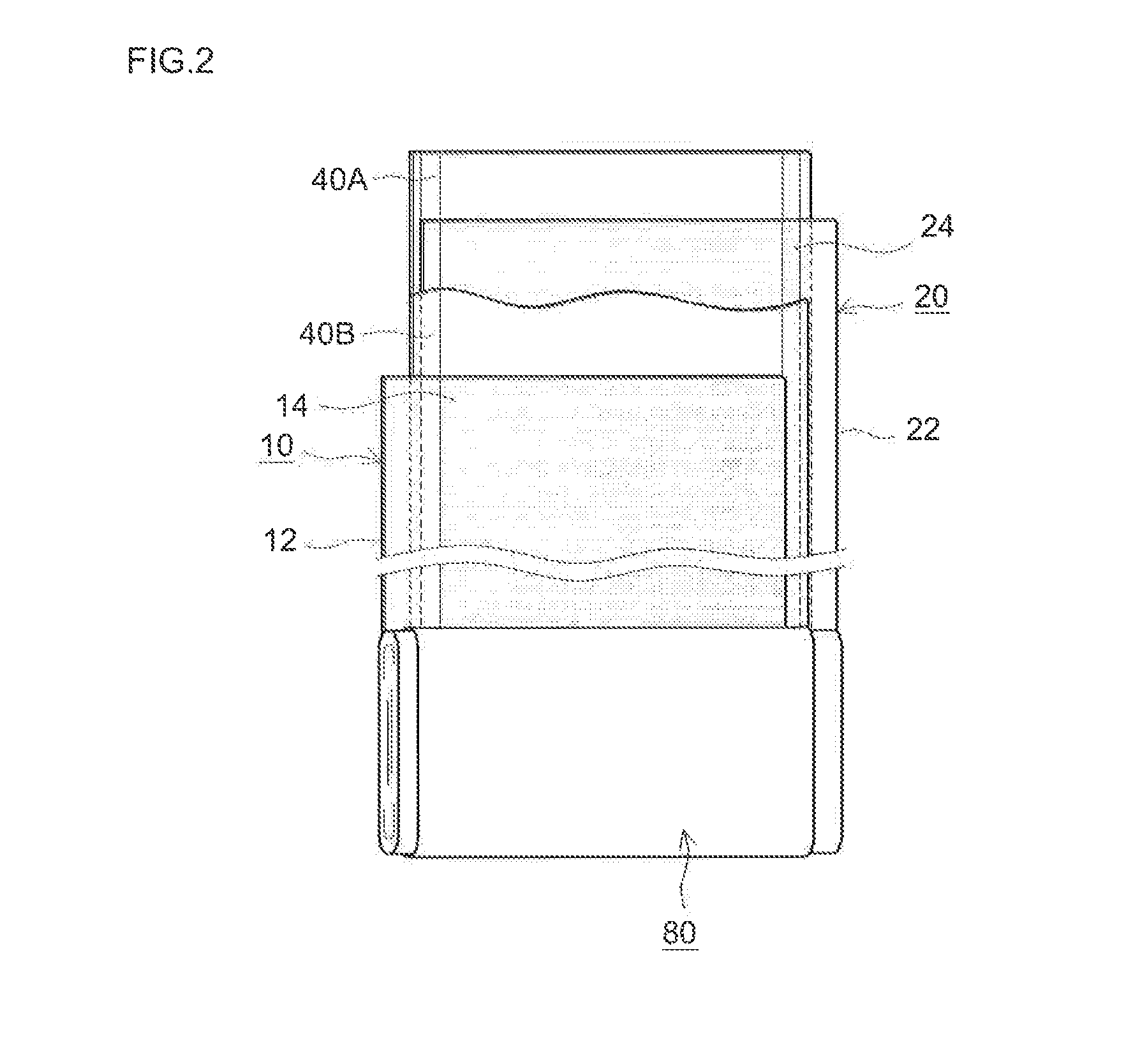Non-aqueous electrolyte secondary battery and method for producing same
a secondary battery and non-aqueous electrolyte technology, applied in the direction of batteries, sustainable manufacturing/processing, cell components, etc., can solve the problems of overcharged state and abnormally high current, and achieve high-precision and stably generated effects, suppressing the degree of polymerization, and producing desirable effects stably
- Summary
- Abstract
- Description
- Claims
- Application Information
AI Technical Summary
Benefits of technology
Problems solved by technology
Method used
Image
Examples
example 1 to example 8
(1) Fabrication of Positive Electrode Sheet
[0079]Lithium nickel manganese cobalt oxide (Li[Ni1 / 3Mn1 / 3Co1 / 3]O2) powder as a positive electrode active material, acetylene black as a conductive material and polyvinylidene fluoride as a binder were mixed at a mass ratio of these materials of 91:6:3 with N-methyl-2-pyrrolidone. To this, 2,2′-azobisisobutylonitrile (AIBN) as a polymerization initiator was added and mixed in an amount as shown in Table 1 to prepare a pasty positive electrode material layer-forming composition at a non-volatile concentration of about 50% by mass. The composition was evenly applied to a face of a long sheet of aluminum foil (15 μm thick) and allowed to dry to form a positive electrode material layer on the positive current collector, whereby a sheet of positive electrode (positive electrode sheet) was fabricated.
(2) Fabrication of Negative Electrode Sheet
[0080]Natural graphite powder as a negative electrode active material, a styrene-butadiene copolymer as a...
PUM
| Property | Measurement | Unit |
|---|---|---|
| temperature | aaaaa | aaaaa |
| thickness | aaaaa | aaaaa |
| conductive | aaaaa | aaaaa |
Abstract
Description
Claims
Application Information
 Login to View More
Login to View More - R&D
- Intellectual Property
- Life Sciences
- Materials
- Tech Scout
- Unparalleled Data Quality
- Higher Quality Content
- 60% Fewer Hallucinations
Browse by: Latest US Patents, China's latest patents, Technical Efficacy Thesaurus, Application Domain, Technology Topic, Popular Technical Reports.
© 2025 PatSnap. All rights reserved.Legal|Privacy policy|Modern Slavery Act Transparency Statement|Sitemap|About US| Contact US: help@patsnap.com



